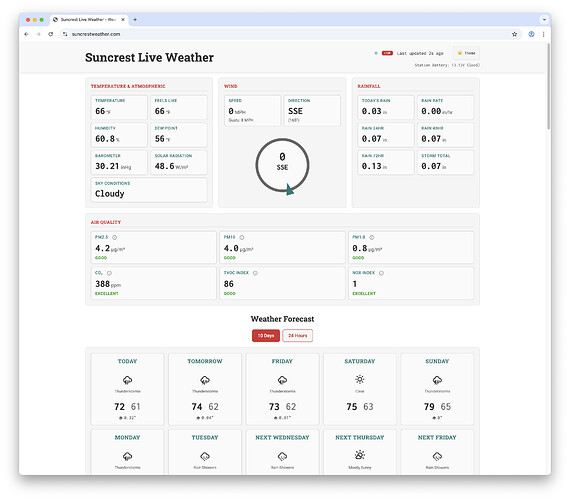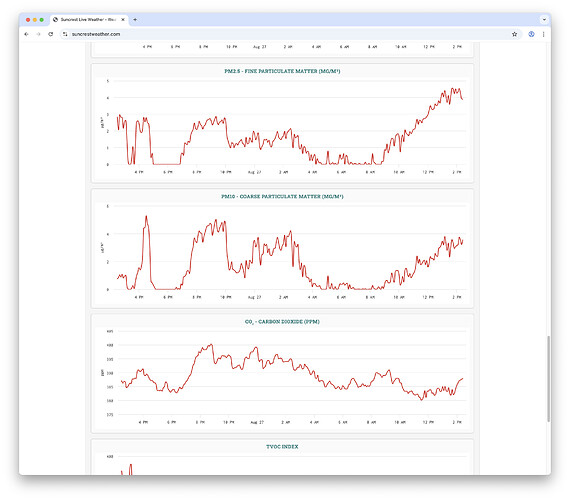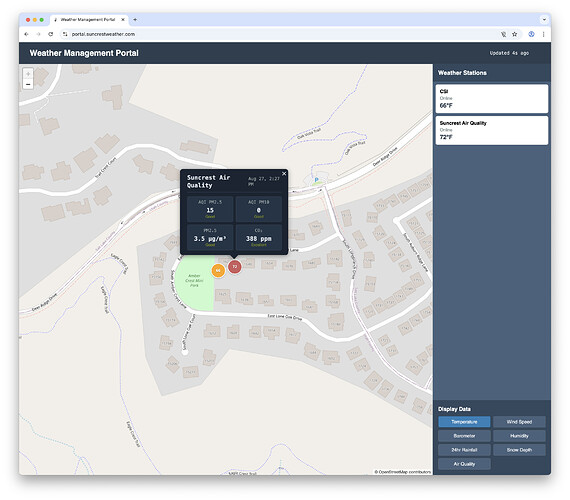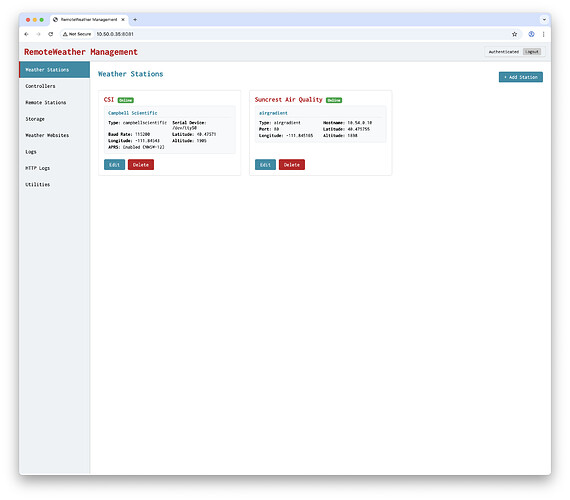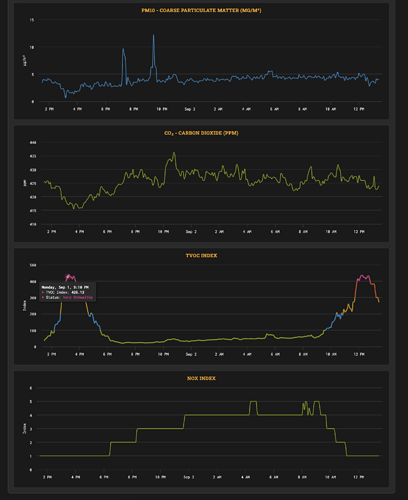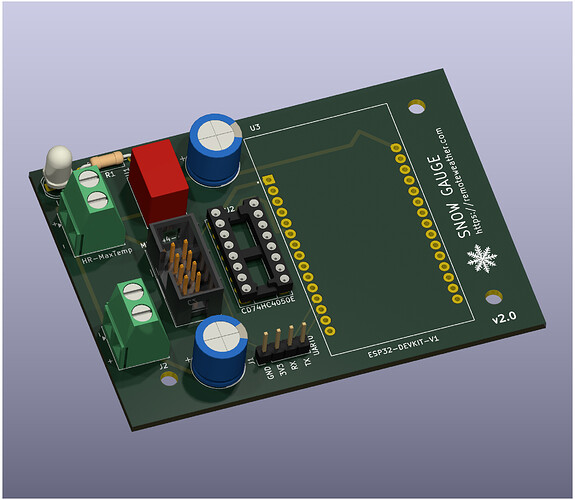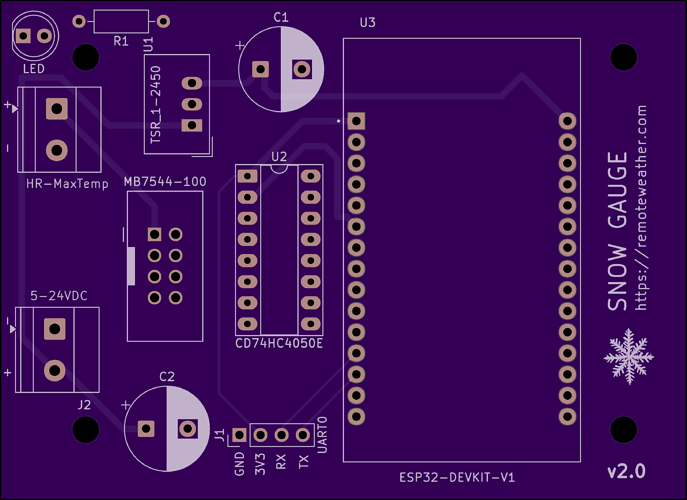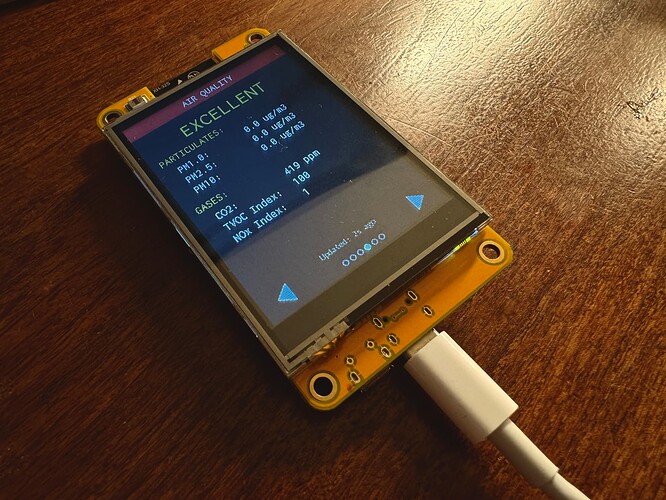Got my O-1PST installed yesterday and I added support for gathering data from AirGradient devices to my weather software, RemoteWeather.
What is RemoteWeather? It’s a modern weather server supporting several popular weather stations (more on the way), as well as other climate devices like the AirGradient and my homemade automatic snow gauge. RW is designed to handle many different stations and instruments simultaneously from a single instance. You could, for example, have dozens of AirGradient devices being polled every 3 seconds and it would handle them easily.
The software is distributed as a single binary and the data is stored in TimescaleDB on the back. RemoteWeather serves up several different types of websites from a single instances:
- a live weather website for each station that streams weather (and air quality data!) and updates every 3 seconds. Even the charts are live and get updated as data comes in.
See my home station: https://suncrestweather.com/. - a web-based management interface for configuring and monitoring your devices and websites (see screenshot)
- a portal that lets you view live data from all of your stations on a map (see live demo here–kind of boring with just one station but I hope to expand later)
I built RemoteWeather for me and my home stations but I’ve been thinking about releasing this as open source software. Technically, it’s available already but the docs are totally out-of-date and wrong and I don’t think anybody would be able to get it going until the docs are re-written and a tutorial written/filmed.
Is this something that people here would be interested in?
